Q
What is the Insurance Price of Proton Persona? See How Much Should You Pay
The insurance cost of the Proton Persona depends on multiple factors, including the model year, engine capacity, the age of the car owner, driving record, and the type of insurance chosen (such as comprehensive insurance or third - party insurance). Generally speaking, the insurance premium for a new car in the first year is about 1% to 3% of the car price. For example, the Proton Persona is priced at around RM50,000 to RM60,000, and the first - year premium may range from RM1,500 to RM2,500. The exact amount still depends on the insurance company and the individual situation of the car owner.
In addition, the insurance cost is also affected by the No Claim Discount (NCD). If the car owner has no accident record for several years, they can enjoy a discount of up to 55%, significantly reducing the premium. It is recommended that car owners compare the quotes of several insurance companies before purchasing insurance and understand the details of the terms, such as whether additional coverage like spontaneous combustion insurance or flood insurance is included, to ensure they choose the most suitable plan for their needs. Meanwhile, regularly checking the policy content and updating information in a timely manner is also an important step to ensure the validity of the insurance.
Special Disclaimer: This content is published by users and does not represent the views or position of PCauto.
Related Q&A
Q
What is the fuel consumption of Persona 2019?
The fuel economy of the 2019 Proton Persona varies depending on driving conditions and transmission type. Official figures show that the 1.6L naturally aspirated engine paired with the CVT gearbox returns around 7.5L/100km in the city, drops to 5.8L/100km on the highway, and averages about 6.6L/100km combined – pretty efficient for a B-segment sedan. Real-world consumption can fluctuate based on driving habits, road conditions, and vehicle maintenance. Keeping tire pressure and engine condition in check through regular servicing helps optimize fuel efficiency. The Persona's Eco Drive assist system also gives dashboard prompts to help drivers develop fuel-saving habits. For even better mileage, avoid aggressive acceleration and maintain a steady speed. In Malaysia's hot weather, using the air conditioning appropriately will increase fuel use but is a necessary expense. It's also worth checking fuel economy numbers for rivals like the Honda City or Toyota Vios to make a well-rounded comparison when car shopping.
Q
What transmission is in the Proton Persona 2019?
The 2019 Proton Persona comes with a CVT gearbox built by Punch, model VT3. This transmission is known for its smooth shifting and fuel efficiency, making it perfect for city driving. Proton has done some local tuning on it to better suit Malaysian road conditions and driving styles. CVT tech delivers a more linear power delivery by using stepless gear changes, cutting down on the power interruptions you get with conventional autos and boosting overall drive comfort. You'll also find this same gearbox in other Proton models like the Iriz, showing the brand's strategy for powertrain commonality. For Malaysian buyers, the CVT's low maintenance costs and reliability make it a practical pick for daily use. Proton even backs the Persona's gearbox with a 5-year or 150,000 km warranty, which really helps build customer confidence. If you're after a more engaging drive, there's a 5-speed manual version too, but the CVT is still the top seller—especially handy in those stop-and-go city jams.
Q
What is the spec of the Proton Persona 2019?
The 2019 Proton Persona is a B-segment sedan that emphasizes practicality and value for money. It comes with a 1.6L naturally aspirated engine paired with either a 5-speed manual or CVT transmission, delivering a maximum output of 107 horsepower and a peak torque of 150 Nm. Fuel economy is decent, with around 7.5L/100km in urban driving. Measuring 4,383mm × 1,722mm × 1,554mm with a 2,555mm wheelbase, it offers reasonable rear legroom and a 436-liter trunk. Standard features include LED daytime running lights, a touchscreen infotainment system (with Bluetooth and USB connectivity), a reverse camera, and dual airbags (upgraded to six in higher trims). The Executive CVT variant adds extras like automatic air conditioning, leather seats, and Electronic Stability Control (ESC). Notably, the 2019 Persona borrows chassis tuning tech from the X70 platform, enhancing ride stability—handy for Malaysia's twisty roads. Local production also ensures easy access to parts and after-sales service, making it a solid pick for budget-conscious buyers seeking a reliable family car.
Q
What is the engine of Proton Persona 2023?
The 2023 Proton Persona is powered by a 1.6-liter naturally aspirated four-cylinder engine, codenamed 4AT. It cranks out 107 horsepower (80 kilowatts) and a peak torque of 150 Newton-meters, paired with a CVT automatic transmission that delivers smooth driving and decent fuel economy. This engine features dual overhead camshafts (DOHC) and a variable valve timing system (VVT), which optimize power delivery and fuel efficiency—perfect for city commuting and daily drives. As a top-selling model from Malaysia's homegrown brand, the Persona's engine is built with reliability and practicality in mind, tailored to local drivers' needs. While naturally aspirated engines might not match turbos in raw power, they shine with lower maintenance costs, making them a solid pick for budget-conscious buyers. In the Malaysian market, the Persona's engine setup offers strong value for the money compared to rivals in its price bracket, easily handling most families' driving requirements.
Q
What is the fuel consumption of Persona 2023?
The 2023 Proton Persona's fuel efficiency, according to official figures, comes in at around 6.0 liters per 100 kilometers on the combined cycle for models powered by the 1.6-liter naturally aspirated engine. Of course, real-world numbers can vary a bit depending on how you drive, the roads you take, and the specific specs of the car – generally, the manual transmission version tends to sip a little less fuel than the CVT-equipped one. As a popular sedan from Malaysia's homegrown brand, the Persona offers solid, well-rounded fuel economy for its class, making it a solid pick for daily city commutes and family use. It's worth keeping in mind that fuel efficiency isn't just about engine tech, though. Things like tire pressure, how often you blast the AC, and regular maintenance all play a big role too. So, if you want to get the best out of your Persona at the pumps, keeping up with good driving habits and sticking to scheduled servicing is key. And if fuel economy is a top priority for you, checking out Malaysia's Energy Efficiency Vehicle (EEV) certification is a smart move – it helps you quickly compare how efficient different models really are.
Q
What is the new Persona game 2023?
Regarding the question "What is the new Persona game 2023?", it's crucial to clarify first that "Persona" isn't a car - related product. Instead, it's the English name for the well - known video game series Persona. In 2023, the series released new titles like Persona 5 Tactica.
If you're looking for new car info in the Malaysian market, though, 2023 saw popular local models like the updated Proton Persona (not the game). This B - segment sedan gained popularity for its strong value - for - money and localized design, equipped with a 1.6L engine and upgraded safety features such as the ASA 3.0 system.
For car enthusiasts, Malaysia's market has recently focused on developing Energy Efficient Vehicles (EEVs), with models like the Perodua Myvi and Proton X50 offering hybrid options or small - displacement engines. The government has also rolled out tax exemption policies to encourage eco - friendly car purchases. We recommend keeping an eye on industry updates from the Malaysian Automotive Institute (MAI) or checking Proton and Perodua's official websites for new car test drive opportunities.
Q
What Segment is Proton Persona?
The Proton Persona belongs to the B-Segment category. B-Segment usually includes some compact-sized family sedans suitable for daily urban commuting. These types of vehicles generally have a moderate length and width, which makes it easy for them to maneuver through congested city traffic and park relatively easily. The Proton Persona has a length of 4366mm, a width of 1722mm, and a wheelbase of 2555mm. Such dimensional design conforms to the characteristics of B-Segment models. In Malaysia, there is a large market demand for B-Segment vehicles because they are economical and practical, meeting the travel needs of most families. Relying on the features of this segment of models, the Proton Persona holds a certain share in the Malaysian family sedan market, offering consumers an affordable and practical travel option.
Q
What is the Reslae Value of Proton Persona?
As a best - selling model of a Malaysian local brand, the Proton Persona shows a stable used - car resale value in the B - class sedan market. Depending on the vehicle age, condition, and configuration, the residual value of a 3 - year - old Proton Persona usually stays around 50% - 60%, while that of a 5 - year - old one is about 40%. This is closely related to its reliable powertrain (such as the 1.6L CamPro engine paired with a CVT gearbox), low maintenance costs, and extensive original - factory service network.
The key factors affecting its resale value include regular original - factory maintenance records, accident - free vehicle conditions, and popular configurations (such as HLA hill - start assist and a 7 - inch touchscreen). Moreover, the high market share also ensures good liquidity.
It's worth noting that Proton models have always been known for their cost - effectiveness. The demand for the Persona in the used - car market is mainly focused on the post - 2019 facelift versions, as they have optimized sound insulation and suspension comfort.
Q
How Many CC is Proton Persona?
The Proton Persona has a displacement of 1597 cc. CC (Cubic Centimeter) is equivalent to a cubic centimeter and is the same as a milliliter (mL). In the automotive field, it is used to represent the engine's displacement. All models of the Proton Persona are equipped with a 1.6 - liter displacement engine. The intake form is natural aspiration (NA), and the cylinder arrangement is an in - line 4 - cylinder. The engine's maximum horsepower is 109 PS, the maximum power is 80 kW, the maximum power speed is 5750 rpm, the maximum torque is 150 N·m, and the maximum torque speed is 4000 rpm. Such a power configuration can meet the needs of daily urban commuting and general road driving. Different versions of the models vary in terms of configuration, comfort, etc., but the core engine displacement remains the same.
Q
What is the Engine in Proton Persona?
Currently, the Proton Persona is equipped with a 1.6-liter naturally aspirated four-cylinder gasoline engine, codenamed CamPro IAFM+. This engine is independently developed by Proton. It has a maximum output power of 107 horsepower (about 80 kilowatts) and a torque of 150 Newton-meters. It is paired with either a 5-speed manual transmission or a CVT continuously variable transmission. The overall performance is smooth, and its fuel economy is suitable for daily driving.
The CamPro series of engines is one of Proton's signature technologies. The IAFM+ (Intelligent Air-Fuel Module with Variable Length Intake Manifold) technology enhances the low-speed torque performance by optimizing the intake efficiency, which meets the driving needs of the multi-urban road conditions in Malaysia. It's worth mentioning that since Proton collaborated with Geely in recent years, some new models have started to adopt turbocharging technology. However, as an economy car, the Persona still continues with the mature and stable naturally aspirated configuration. This setup is more attractive to local consumers in terms of maintenance cost and reliability.
If you have higher requirements for power, you can pay attention to Proton's models equipped with the 1.5TGDI turbocharged engine. Nevertheless, the Persona is more positioned towards practicality and cost-effectiveness, making it suitable for family users who focus on daily commuting.
Popular Cars
Model Year
Car Compare
Car Photo
Latest Q&A
Q
How much is the 2024 Vanquish?
The specific selling price of the 2024 Aston Martin Vanquish has not been officially announced yet, but based on the market positioning of the previous generation model and supercars in the same class, the starting price is expected to be between RM1.5 million and RM2 million, and the specific price will fluctuate depending on optional configurations and tax rates. As Aston Martin's flagship GT sports car, Vanquish is typically equipped with a V12 engine with a power output of over 600 horsepower, and features a carbon fiber structure and luxurious handmade interior that balances performance and comfort. It should be noted that these high-end sports cars often require advance booking and long delivery cycles. It is recommended to directly contact authorized dealers for the latest information, including customization options and financial solutions. In the same price range, models such as Ferrari Roma or Bentley Continental GT can also be considered, each with its own characteristics. For example, Roma leans more towards sporty handling, while Continental GT emphasizes luxury travel experience, and consumers can choose according to their own needs.
Q
What engine is in the Vanquish 2024?
The 2024 Vanquish is expected to pack a fortified 5.2-liter V12 twin-turbocharged engine, sourced from Aston Martin’s flagship powertrain lineup. With power likely bumped to around 700 horsepower and torque peaking at 800 Nm, it’s paired with an 8-speed automatic transmission—balancing blistering performance with seamless shifts.
The aluminum block and twin-scroll turbos keep weight in check while sharpening throttle response, and cylinder deactivation helps with fuel efficiency when you’re not chasing the horizon. As Aston’s GT flagship, the Vanquish’s tuning prioritizes low-end grunt, making it equally at home on cross-country hauls or twisty mountain passes.
Worth noting: these big-displacement turbo engines handle tropical climates with ease, thanks to cooling systems specifically tweaked for high-temperature resilience—critical when pushing hard. For those craving extra edge, optional carbon-ceramic brakes and rear-wheel steering dial up the agility, ensuring composure even when the roads get unpredictable.
Q
What does a 2024 Aston Martin cost?
The 2024 Aston Martin lineup sees significant price variations depending on model and specifications. The entry-level Vantage starts at approximately RM1 to 1.2 million, while the DB12 ranges between RM1.5 to 1.8 million. Flagship performers like the DBS 770 Ultimate or limited-run Valhalla can easily surpass RM3 million. These figures typically cover base configurations, though costs rise with optional performance packs, bespoke interiors, or specialty paintwork.
As a handcrafted British luxury marque, Aston Martins feature either uprated 4.0L V8 twin-turbo or 5.2L V12 powertrains, paired with cutting-edge tech like intelligent suspension and digital cockpits. Buyers should consult authorized dealers for exact configurations—the brand’s personalization program allows extensive customization of materials and finishes.
Pro tip: Factor in elevated insurance and maintenance costs. These high-performance machines follow specialized service schedules, so review aftersales policies beforehand. Always confirm final pricing with your dealer, as options dramatically impact the bottom line.
Q
How much is the 2024 Aston Martin Vanquish?
The specific selling price of the 2024 Aston Martin Vanquish has not yet been officially announced by the official, but based on the pricing strategy of the previous generation model and brand, it is expected that the starting price will remain in the range of 300000 to 400000 US dollars, and the specific price will be adjusted according to optional configurations and exchange rate fluctuations. As the flagship GT sports car of the brand, Vanquish continues the classic British design language, equipped with an enhanced V12 engine with a maximum power of over 600 horsepower, and equipped with a new generation of adaptive suspension and carbon fiber body technology, achieving a balance between luxury and performance. It is worth noting that these ultra luxury models are usually produced on an order basis with a long delivery cycle. It is recommended to obtain customized quotes through authorized dealers. Competitors in the same class include Ferrari Roma and Bentley Continental GT, but Vanquish emphasizes the combination of long-distance comfort and driving pleasure. Its iconic grille design and hand sewn interior craftsmanship also continue the brand's unique recognition.
Q
Does the 2019 Kia Cerato have Apple CarPlay?
The 2019 Kia Cerato did come equipped with Apple CarPlay, which was a pretty standard tech feature for its class at the time. It lets you mirror your iPhone’s navigation, music, and calls onto the car’s display via USB—handy for keeping things safe and convenient on the road. Android Auto was also onboard, so it covered both major phone ecosystems. The 8-inch touchscreen was responsive, with a clean interface that made it easy to use.
Just a heads-up: for the best CarPlay experience, make sure your iPhone’s OS is compatible and use an original cable. Back in 2019, rivals like the Toyota Corolla and Honda Civic offered similar tech, but the Cerato stood out for its value, especially if you wanted solid features without overspending. If you run into any hiccups with CarPlay, the owner’s manual or a dealership visit should sort you out.
View MoreRelated News
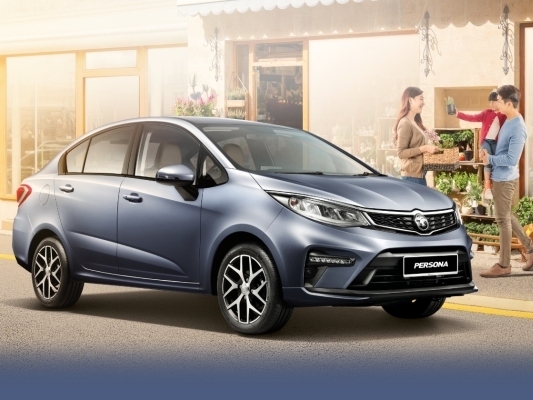
Proton Persona Interior Design Revealed: A High-Value B-Segment Sedan Interior Analysis
MichaelJul 21, 2025
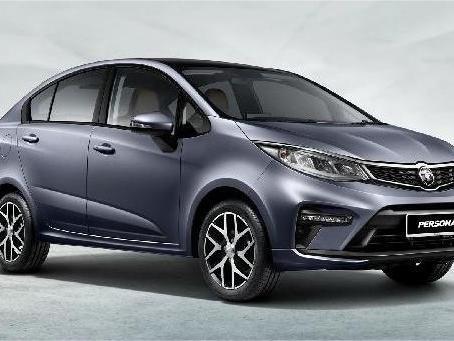
Proton Persona Review: Fuel-Efficient, Spacious City Sedan
JamesApr 8, 2025
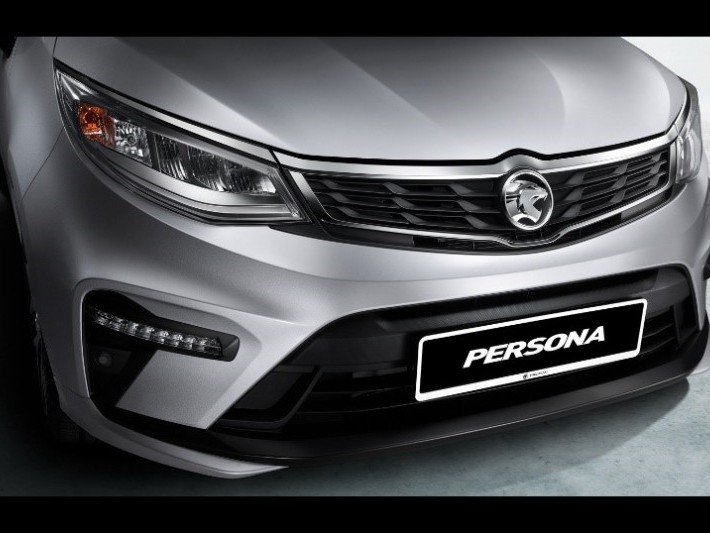
Considering buying a Proton Persona? Don't miss this fuel consumption guide!
LienOct 17, 2024
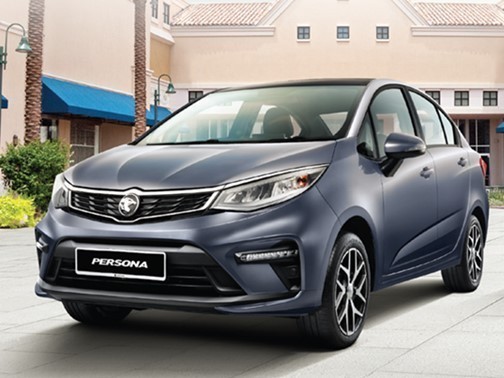
Proton Persona Buying Guide: Price, Configuration, How to Choose Between mid and high end models?
JamesOct 16, 2024
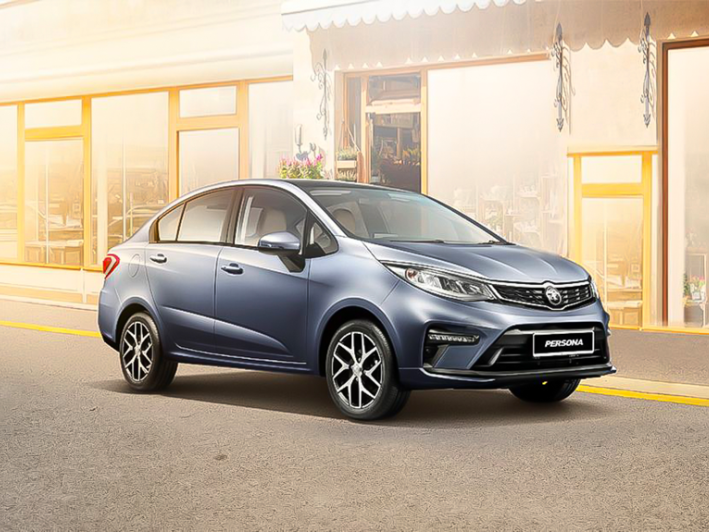
The 2022 Proton Persona is priced from RM 47,800, with a CVT gearbox standard across the range
LienJun 17, 2024
View More












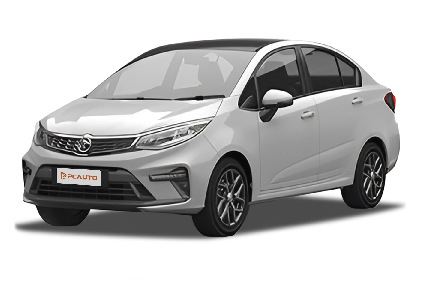





Pros
Cons